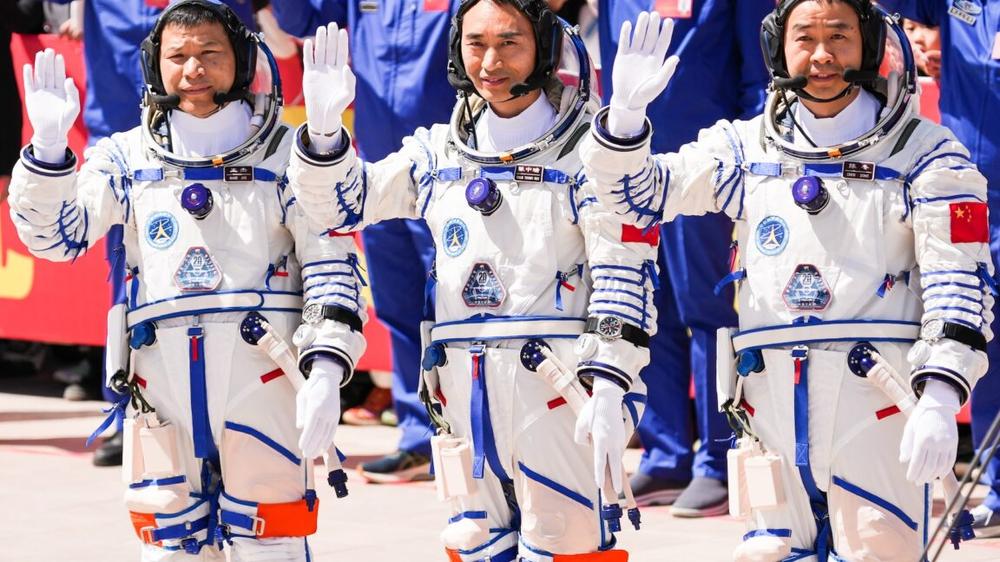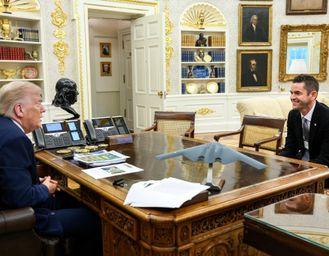Three Chinese astronauts were due to depart the Tiangong space station, reenter the atmosphere, and land in the remote desert of Inner Mongolia on Wednesday. Instead, officials ordered the crew to remain at the station while engineers investigate a potential problem with their landing craft.
The China Manned Space Agency, run by the country’s military, announced the change late Tuesday in a brief statement posted to Weibo, the Chinese social media platform.
“The Shenzhou 20 manned spacecraft is suspected of being impacted by small space debris,” the statement said. “Impact analysis and risk assessment are underway. To ensure the safety and health of the astronauts and the complete success of the mission, it has been decided that the Shenzhou 20 return mission, originally scheduled for November 5, will be postponed.”
What we know
The Shenzhou 20 astronauts arrived at the Tiangong station in April. Their replacements on the Shenzhou 21 mission docked with Tiangong on Friday, temporarily raising the station’s crew size to six people. After several days of joint operations, the six astronauts held a handover ceremony early Tuesday to formally transfer command of the outpost to the new crew.
Less than 24 hours later, Chinese officials decided to call off Shenzhou 20’s departure from Tiangong. The statement from the China Manned Space Agency did not say what part of the Shenzhou 20 spacecraft may have been damaged, what evidence led engineers to suspect space debris was the culprit, or how long Shenzhou 20’s departure might be postponed.
The ship has three sections, with a landing capsule positioned between crew living quarters and a power and propulsion module. The modules separate from one another before reentry, and the return craft heads for a parachute-assisted landing while the other elements burn up during atmospheric reentry.
The Shenzhou 20 crew is led by commander Chen Dong, a veteran astronaut and former Chinese fighter pilot on his third trip to space. Two spaceflight rookies, Chen Zhongrui and Wang Jie, are also awaiting their homecoming after six months in orbit.
It’s rare for China to disclose a problem during an ongoing space mission. Operations on China’s Tiangong space station have proceeded without significant issues since crews started visiting the complex in 2021, but Chinese officials were aware of the risk of space junk. The Shenzhou 20 astronauts ventured outside Tiangong on four spacewalks during their mission. All of the excursions focused on beefing up external shielding to protect the station from space debris strikes, according to China’s official accounts of the spacewalks.
The station suffered a partial power loss after a piece of space junk hit one of its solar panels in 2023, prompting repairs on several spacewalks last year. That was followed by a spacewalking frenzy to install what Chinese state media called “space debris protection devices” on the outside of the complex.
The International Space Station, led by the United States and Russia, has also had run-ins with small fragments of space debris. One such event happened in 2021, when a piece of space junk just 1 millimeter in size—too small to be tracked from the ground—punched a hole in the space station’s Canadian-built robotic arm. The impact didn’t affect the performance of the robotic arm, but an object that small traveling at nearly 5 miles per second could do damage if it hit a more sensitive area.
There was no immediate indication from China that engineers might deem the Shenzhou 20 spacecraft unsafe for reentry and landing. If the ship is damaged beyond repair, officials have a backup Shenzhou spacecraft and rocket that could launch on a rescue mission from the country’s space center in Jiuquan, an isolated base in the Gobi desert of northwestern China.

 Trump riabilita Jared Isaacman: il comandante di Inspiration4 sarà il nuovo amministratore della NASA
Trump riabilita Jared Isaacman: il comandante di Inspiration4 sarà il nuovo amministratore della NASA